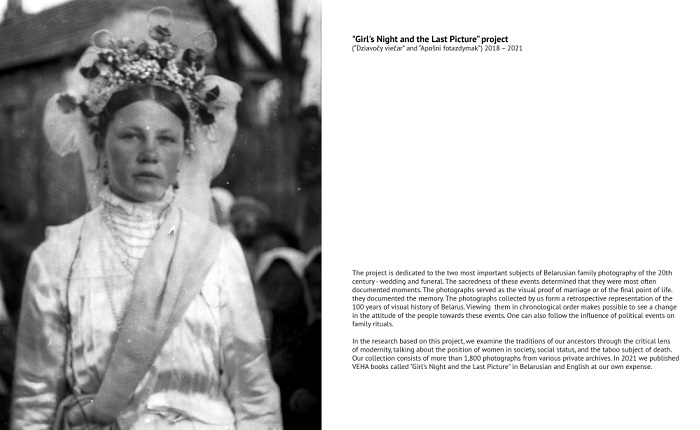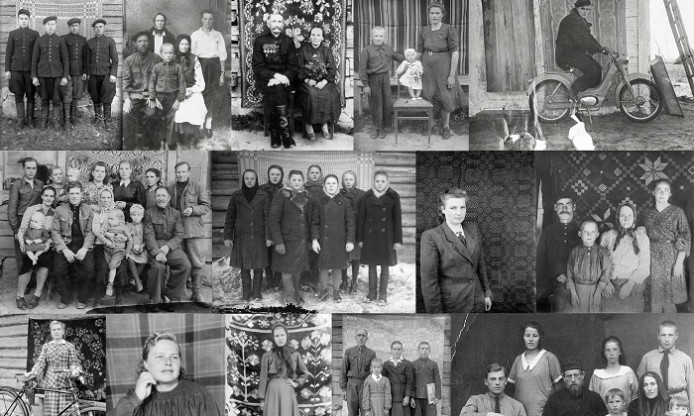all images in this post are courtesy of VEHA.
VEHA is a volunteer-based project which existed in the cultural environment of Belarus since 2017, and compiles thematic collections from family photo albums, cataloguing and publishing the collections online. Based on such archive materials, the project organizes exhibitions, conducts research, and publishes books. While attempting to understand and preserve traditions, the project works to return the image of everyday life of old Belarusian villages, to reconstruct the history of our common past.
Visit VEHA online: http://veha.by/
A team of professional artists, photographers and designers from Minsk, with many years’ experience in visual media, take part in VEHA project, that aims to process analogue photo archives, thus helping families preserve their visual history and pass on this heritage to future generations. VEHA provides helps with genealogical research, creates high-quality copies of old photos, structures the collected information and creates a uniquely designed “family book” – the book of heritage.
A number of thematic collections were realized by VEHA in the course of time, such as “The best side” (2017-2018) about studio portraits; “Girl’s night and the last picture” (2018-2021) on weddings and funerals; and “People of the forest” (2022-in progress) which focuses on outdoor photography. Each of these collections were showcased in a photographic exhibition and a published book.
VEHA’s booklet with more info and photos: download PDF (5 Mb) or view online.

The interest in Belarusian identity originated during the social and political turmoil of Europe in early 1990s, which put an end to the bipolar world, where the Berlin Wall served as the physical and symbolic border for many years. Since Belarus constantly received new definitions of the national identity, to treat it in a strict etymological sense, on the basis of the origin and people’s place of birth, is simply not reasonable.
The history of photography goes back more than 190 years. Over this time, almost every family has collected a large archive consisting of prints, films and slides which are at risk of decay if not preserved. For this reason, digitization of this family heritage is important. Also, it is important to collect the family’s oral history, that is information which cannot be found in historic cultural archives. These can be family recipes, types of crafts that are disappearing, or a personal story about the family having gone through the war and overcoming challenges, or the origin of their family name. This is cultural heritage handed down from generation to generation, and it may simply disappear if these stories are not recorded and saved.
VEHA got a lot of public attention and is still successfully working towards its mission to help everyone understand the path their ancestors went through, and to find their personal history reflected in their family archive.


